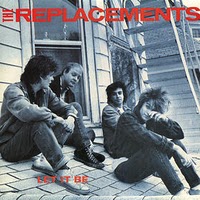 For me this is far and away the best album The Replacements ever made. Some people say that they wish rock and roll was always imbued with the spirit that The Clash brought to it on “London Calling”. I could easily say the same thing about “Let it Be”. This is the perfect synthesis of rock aggression and songwriting finesse. A song like “Androgynous” probably wouldn’t move me so much if it had been more slickly produced. The raw beauty of these songs makes me believe in them. There have been a million songs written about adolescence but “Sixteen Blue” is one of the only ones that really feels like it. The painful yearning and confusion of being sixteen is captured perfectly in those crunching guitar chords and especially the guitar solo with which the song closes. Rather than offering release, the end of the song raises the unresolved tension higher and higher. It is full of beauty and sadness. And then we have the album closer, “Answering Machine”, with its fabulous, tight guitar playing, its earnest, pleading vocal and gorgeous melodicism. This is one of the best songs ever written about romantic obsession. Indeed this is one of the best rock songs period. In its rawness, energy and its dual loyalties to grunge and melody, in 1984 this album sounded like the future itself. –Javasean
For me this is far and away the best album The Replacements ever made. Some people say that they wish rock and roll was always imbued with the spirit that The Clash brought to it on “London Calling”. I could easily say the same thing about “Let it Be”. This is the perfect synthesis of rock aggression and songwriting finesse. A song like “Androgynous” probably wouldn’t move me so much if it had been more slickly produced. The raw beauty of these songs makes me believe in them. There have been a million songs written about adolescence but “Sixteen Blue” is one of the only ones that really feels like it. The painful yearning and confusion of being sixteen is captured perfectly in those crunching guitar chords and especially the guitar solo with which the song closes. Rather than offering release, the end of the song raises the unresolved tension higher and higher. It is full of beauty and sadness. And then we have the album closer, “Answering Machine”, with its fabulous, tight guitar playing, its earnest, pleading vocal and gorgeous melodicism. This is one of the best songs ever written about romantic obsession. Indeed this is one of the best rock songs period. In its rawness, energy and its dual loyalties to grunge and melody, in 1984 this album sounded like the future itself. –Javasean
Album Reviews
Blood, Sweat & Tears “Child Is Father to the Man” (1968)
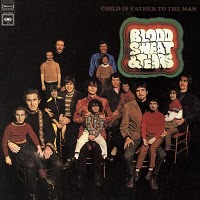 It’s easy to overlook the ubiquitous Blood, Sweat & Tears as their LPs seem to be present in almost every dollar bin in every city. Spend the buck! Their debut is an essential listen and features the unpredictable Al Kooper at the peak of his powers. The music is an eclectic fusion of progressive and psychedelic rock, blues and jazz. There are even elements of lounge music, and occasional orchestration added to the mix. The album features eight originals and four covers. The best covers are Randy Newman’s uplifting Just One Smile and Carole King’s So Much Love which closes the album. Most of the originals were composed by Al Kooper. His bizarre Overture opens, with it’s enticing orchestrated music joined by some manic laughing. Kooper’s I Love You More Than You’ll Ever Know is an excellent jazzed-up blues song and Something Goin’ On is a great jam that was an essential part of late 60s progressive rock. Child Is Father to the Man is an excellent experimental rock album and an important part of any 60s pop collection. –Jim
It’s easy to overlook the ubiquitous Blood, Sweat & Tears as their LPs seem to be present in almost every dollar bin in every city. Spend the buck! Their debut is an essential listen and features the unpredictable Al Kooper at the peak of his powers. The music is an eclectic fusion of progressive and psychedelic rock, blues and jazz. There are even elements of lounge music, and occasional orchestration added to the mix. The album features eight originals and four covers. The best covers are Randy Newman’s uplifting Just One Smile and Carole King’s So Much Love which closes the album. Most of the originals were composed by Al Kooper. His bizarre Overture opens, with it’s enticing orchestrated music joined by some manic laughing. Kooper’s I Love You More Than You’ll Ever Know is an excellent jazzed-up blues song and Something Goin’ On is a great jam that was an essential part of late 60s progressive rock. Child Is Father to the Man is an excellent experimental rock album and an important part of any 60s pop collection. –Jim
Ornette Coleman “This Is Our Music” (1961)
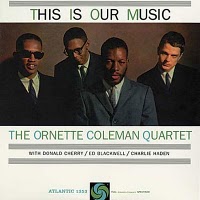 It was over 30 years ago that I bought my first Ornette Coleman album, Free Jazz, from the second-hand record shop: it was love at first sight (first hear?). Love is inexplicable, at least to those in love, but the sound of Coleman’s alto had an immediate effect on me, an emotional connection, that continues until today. It is the early Atlantic recordings that remain at the heart of my love for Coleman. I have only been listening to This Is Our Music for the past couple of months (I feel no need to rush a love affair), but, other than Free jazz, it has become my favorite of the Coleman-Atlantic albums (but I don’t feel I have to be bound by that judgement in the future). I have heard it said that compared to other figures of the 1960s jazz avant garde Coleman now seems very tame: I think that is true, at least as far as he doesn’t howl and shout in way that threatened to blow away all our assumptions of what music should be, but then the other avant garde sax players tended to fall in behind Coltrane, in their stance of difference they tended to sound the same, while Coleman remains unique. He has created his own musical world, one I find as vivid and friendly as an Impressionist painting, and it is a world that has no successful copies. The one musician who shared this vision was Don Cherry and he is the Engels to Coleman’s Marx, the Watson to his Holmes, the Robin to his Batman – he is the lesser figure, the one who takes his imaginative world from his dominating companion, but maybe he brings Coleman closer, creating a bridge between him and us. Charlie Haden is the anchor for this music, for most of this album playing an idiosyncratic hard bop bass, it has the lines that stabilize the music. The exception is Beauty Is a Strange Thing where, playing with a bow, he allows the music to drift away like a cloud without any edges. Ed Blackwell is a unique drummer (and I much prefer him to Billy Higgins’ work on the earlier Atlantic-Coleman albums) – he is the gentlest of drummers, not giving the music the rhythmic propulsion we expect a drummer to provide, but rather a rhythmic voice responding to and answering the horns. Writing about other Coleman-Atlantic albums I have said that their great limitation is that all the tracks tend to be a bit the same – here there are two numbers that stand out for their difference: the slow and hovering Beauty Is a Rare Thing and the reinvention of Embraceable You. The latter is the only Ornette Coleman version of a standard I know – it is as though Gershwin’s melody has been replanted in a totally alien soil and it has grown in an unforeseeable way, still recognisably having the same shape, but also disturbingly different. –Nick
It was over 30 years ago that I bought my first Ornette Coleman album, Free Jazz, from the second-hand record shop: it was love at first sight (first hear?). Love is inexplicable, at least to those in love, but the sound of Coleman’s alto had an immediate effect on me, an emotional connection, that continues until today. It is the early Atlantic recordings that remain at the heart of my love for Coleman. I have only been listening to This Is Our Music for the past couple of months (I feel no need to rush a love affair), but, other than Free jazz, it has become my favorite of the Coleman-Atlantic albums (but I don’t feel I have to be bound by that judgement in the future). I have heard it said that compared to other figures of the 1960s jazz avant garde Coleman now seems very tame: I think that is true, at least as far as he doesn’t howl and shout in way that threatened to blow away all our assumptions of what music should be, but then the other avant garde sax players tended to fall in behind Coltrane, in their stance of difference they tended to sound the same, while Coleman remains unique. He has created his own musical world, one I find as vivid and friendly as an Impressionist painting, and it is a world that has no successful copies. The one musician who shared this vision was Don Cherry and he is the Engels to Coleman’s Marx, the Watson to his Holmes, the Robin to his Batman – he is the lesser figure, the one who takes his imaginative world from his dominating companion, but maybe he brings Coleman closer, creating a bridge between him and us. Charlie Haden is the anchor for this music, for most of this album playing an idiosyncratic hard bop bass, it has the lines that stabilize the music. The exception is Beauty Is a Strange Thing where, playing with a bow, he allows the music to drift away like a cloud without any edges. Ed Blackwell is a unique drummer (and I much prefer him to Billy Higgins’ work on the earlier Atlantic-Coleman albums) – he is the gentlest of drummers, not giving the music the rhythmic propulsion we expect a drummer to provide, but rather a rhythmic voice responding to and answering the horns. Writing about other Coleman-Atlantic albums I have said that their great limitation is that all the tracks tend to be a bit the same – here there are two numbers that stand out for their difference: the slow and hovering Beauty Is a Rare Thing and the reinvention of Embraceable You. The latter is the only Ornette Coleman version of a standard I know – it is as though Gershwin’s melody has been replanted in a totally alien soil and it has grown in an unforeseeable way, still recognisably having the same shape, but also disturbingly different. –Nick
Kiss “Kiss” (1974)
 Before the merchandising, neon spandex, and nostalgia circuit, KISS were just another hard rock band with stars in/on their eyes. Kiss, the debut, is loaded with future klassics that display the Stanley/Simmons partnership’s knack for grafting pop hooks to bludgeoning riffs, sporting the likes of “Deuce,” “Strutter,” “Nothin’ to Lose,” and immortal hooker drama “Black Diamond,” a vocal-shy Ace checking in with urban intoxication anthem “Cold Gin,” and an overlooked gem in the simple charm of “Let Me Know.” While the less said about the “Kissin’ Time” cover grafted on to later pressings, the better, and ignoring the fact that a certain sluggishness drags some of these recordings down compared to their Alive! revamps, Kiss remains an auspicious debut. –Ben
Before the merchandising, neon spandex, and nostalgia circuit, KISS were just another hard rock band with stars in/on their eyes. Kiss, the debut, is loaded with future klassics that display the Stanley/Simmons partnership’s knack for grafting pop hooks to bludgeoning riffs, sporting the likes of “Deuce,” “Strutter,” “Nothin’ to Lose,” and immortal hooker drama “Black Diamond,” a vocal-shy Ace checking in with urban intoxication anthem “Cold Gin,” and an overlooked gem in the simple charm of “Let Me Know.” While the less said about the “Kissin’ Time” cover grafted on to later pressings, the better, and ignoring the fact that a certain sluggishness drags some of these recordings down compared to their Alive! revamps, Kiss remains an auspicious debut. –Ben
The Fixx “Reach the Beach” (1983)
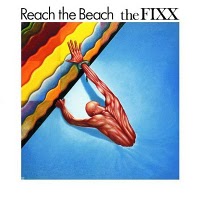 I remember seeing The Fixx on MTV when I was 13, there was always this dark sophistication surrounding them. Their sophomore album, Reach the Beach lives up to those first impressions. This record was quite a success for them with the hits “Saved by Zero”, a complex tune with a hopeless optimism that seems to clash with the melody & “One thing Leads to Another”, an almost dance track about deceit in relationships. The rest of the record follows suit with clean, chorus drenched guitar licks, snappy bass slaps, dissonant keyboards & those wonderful synthesized drums we all loved from the eighties. Cy Curnin’s vocals croon like The Cure’s Robert Smith trying to imitate Duran Duran’s Simon Le Bon, in fact, the music could be described in the same way, new wave funkiness with a sense of melancholy underneath it all- like trying to dance when your sad. Slightly cynical lyrics with upbeat, yet complex arrangements spare this record from being another eighties novelty, the contradictions keep it real. –ECM Tim
I remember seeing The Fixx on MTV when I was 13, there was always this dark sophistication surrounding them. Their sophomore album, Reach the Beach lives up to those first impressions. This record was quite a success for them with the hits “Saved by Zero”, a complex tune with a hopeless optimism that seems to clash with the melody & “One thing Leads to Another”, an almost dance track about deceit in relationships. The rest of the record follows suit with clean, chorus drenched guitar licks, snappy bass slaps, dissonant keyboards & those wonderful synthesized drums we all loved from the eighties. Cy Curnin’s vocals croon like The Cure’s Robert Smith trying to imitate Duran Duran’s Simon Le Bon, in fact, the music could be described in the same way, new wave funkiness with a sense of melancholy underneath it all- like trying to dance when your sad. Slightly cynical lyrics with upbeat, yet complex arrangements spare this record from being another eighties novelty, the contradictions keep it real. –ECM Tim
Repost: 10cc “Sheet Music” (1974)
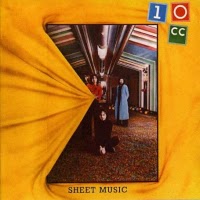 10cc’s “Sheet Music” may be one of my favorite pop albums of all time, lovingly crafted songs, witty, ironic and containing themes still highly relevant even today (“Clockwork Creep” is both funny yet scary when one consideres what the world has had to endure these last few years and “Hotel” nails American Imperialism down with wit and ingenuity), musically this album never fails to surprise taking in 70’s rock (Wall Street Shuffle, Silly Love, Oh Effendi), Calypso (Hotel), Latin Rock (Baron Samedi) and pure pop (The Worst Band In The World, Clockwork Creep), however the two standouts are the most cinematic pieces on the album, “Somewhere In Hollywood” brilliantly send up Hollywood and the star system, whilst “Old Wild Men” looks forward to 10cc’s eventual decline with heart and soul. –Derek
10cc’s “Sheet Music” may be one of my favorite pop albums of all time, lovingly crafted songs, witty, ironic and containing themes still highly relevant even today (“Clockwork Creep” is both funny yet scary when one consideres what the world has had to endure these last few years and “Hotel” nails American Imperialism down with wit and ingenuity), musically this album never fails to surprise taking in 70’s rock (Wall Street Shuffle, Silly Love, Oh Effendi), Calypso (Hotel), Latin Rock (Baron Samedi) and pure pop (The Worst Band In The World, Clockwork Creep), however the two standouts are the most cinematic pieces on the album, “Somewhere In Hollywood” brilliantly send up Hollywood and the star system, whilst “Old Wild Men” looks forward to 10cc’s eventual decline with heart and soul. –Derek
“Sheet Music” is a perennial Jive Time favorite and one of my top ten albums of all time. Fans of Sparks, late Move and early ELO will find things to love here. For those who only know 10cc from their hits; you may be pleasantly surprised when you hear “Sheet Music.” –David
Love “Da Capo” (1966)
 Inhabiting a strange dimension between the Byrds-meets-the-Rolling Stones bluster of their debut LP and the psychedelic mariachi sprawl of Forever Changes, Love’s Da Capo is a transitional album in every sense of the word. Taken together, the six songs that constitute its “Side A Suite” represent some of the best music of the ’60s, making it all the more painful that Side B represents one of its biggest let-downs. On the opening track, “Stephanie Knows Who”, Arthur Lee not only comes into his own, but also establishes himself as one of the most unique and expressive lead vocalists of his generation. There are probably Hallmark cards that are less maudlin and sappy than the MacLean-penned second track, “Orange Skies”, but somehow, miraculously, the band’s tight playing and Lee’s delivery elevate it to greatness. The loungey “¡Que Vida!” is a bit of fluff, but it swings like a Sunset Strip hipster. The mighty “Seven and Seven Is”, one of the few Love songs that ever charted, has been reproduced on garage compilations many times over, but hearing it here in its natural environment reveals what a massive artistic achievement it really is. Loud, fast, and intense, it could only end with the famous nuclear blast of its coda. Thankfully, respite is provided in the form of the acoustic and introspective gem, “The Castle”. Finally comes the mystical masterpiece, “She Comes in Colors”, a song so great that even the Hooters couldn’t ruin it when they covered it almost two decades later. But then there’s the meandering blues-jam, “Revelation”. Taking up that whole flipside and clocking in at almost 20 minutes, it’s perhaps unfairly maligned. On its own merits it’s not terrible, but here it only detracts from the focused brilliance of what came before, and it wears out its welcome quickly. Had wiser council prevailed at Elektra, Da Capo would take its place among such giants such as Are You Experienced?, Piper at the Gates of Dawn, and even its creators’ own definitive artistic statement, Forever Changes. But instead this sophomore effort has to settle for “almost great” status. However, it is still essential. – Richard
Inhabiting a strange dimension between the Byrds-meets-the-Rolling Stones bluster of their debut LP and the psychedelic mariachi sprawl of Forever Changes, Love’s Da Capo is a transitional album in every sense of the word. Taken together, the six songs that constitute its “Side A Suite” represent some of the best music of the ’60s, making it all the more painful that Side B represents one of its biggest let-downs. On the opening track, “Stephanie Knows Who”, Arthur Lee not only comes into his own, but also establishes himself as one of the most unique and expressive lead vocalists of his generation. There are probably Hallmark cards that are less maudlin and sappy than the MacLean-penned second track, “Orange Skies”, but somehow, miraculously, the band’s tight playing and Lee’s delivery elevate it to greatness. The loungey “¡Que Vida!” is a bit of fluff, but it swings like a Sunset Strip hipster. The mighty “Seven and Seven Is”, one of the few Love songs that ever charted, has been reproduced on garage compilations many times over, but hearing it here in its natural environment reveals what a massive artistic achievement it really is. Loud, fast, and intense, it could only end with the famous nuclear blast of its coda. Thankfully, respite is provided in the form of the acoustic and introspective gem, “The Castle”. Finally comes the mystical masterpiece, “She Comes in Colors”, a song so great that even the Hooters couldn’t ruin it when they covered it almost two decades later. But then there’s the meandering blues-jam, “Revelation”. Taking up that whole flipside and clocking in at almost 20 minutes, it’s perhaps unfairly maligned. On its own merits it’s not terrible, but here it only detracts from the focused brilliance of what came before, and it wears out its welcome quickly. Had wiser council prevailed at Elektra, Da Capo would take its place among such giants such as Are You Experienced?, Piper at the Gates of Dawn, and even its creators’ own definitive artistic statement, Forever Changes. But instead this sophomore effort has to settle for “almost great” status. However, it is still essential. – Richard
Beyond Nuggets:
A Guide to ’60s Ephemera
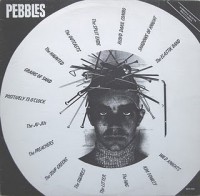
In 1972 Elektra Records’ Jac Holzman asked future Patti Smith Group guitarist and bassist Lenny Kay to compile what was a essentially a glorified mixed tape, resulting in Nuggets: Original Artyfacts of the First Psychedelic Era. This release became synonymous with the term “Garage Rock”, but this designation is not entirely accurate. Though rough and tumble staples like the 13th Floor Elevators and the Seeds are represented, more poppy-sounding bands like the Mojo Men, Sagittarius (featuring Glenn Campbell on vocals), and a host of other acts—some of whom were nowhere near a suburban garage when they cut these sides — are there too. Nuggets’ legacy is not so much its innovative (re)packaging of near hits, but its role in defining an aesthetic and its establishing of multiple genres and sub-genres: acid rock, power pop, sunshine pop, imitation Merseybeat, Dylan copycats, blue-eyed soul, even early Latino-rock — they’re all here along with more that send rock critics reaching for their thesauruses and record collectors scrambling for their paypal accounts. Perhaps neither Kaye nor Holzman knew the long-term ramifications of their Frankenstenian experiment. Indeed, the monster they created essentially spawned a whole industry, that of the Esoteric 60’s Music Compilation. It’s an industry that refuses to die, even almost 40 years later. Exploring this brave new world can be a daunting task. Here then is a quick guide to some logical starting points:
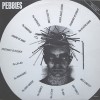 1. Pebbles – Conceived and created in Australia only a few years after the original Nuggets, this series focused on more raw and obscure (though not entirely unknown) acts from the US. Numerous volumes and offshoot series of widely varying quality proliferated through the 70’s and 80’s, but volumes 1-6 are pretty darn solid.
1. Pebbles – Conceived and created in Australia only a few years after the original Nuggets, this series focused on more raw and obscure (though not entirely unknown) acts from the US. Numerous volumes and offshoot series of widely varying quality proliferated through the 70’s and 80’s, but volumes 1-6 are pretty darn solid.
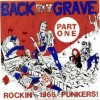 2. Back From The Grave – One of the few series worthy of the “60’s Garage Rock” classification, the US bands represented here are young, fast, raw, and sometimes very poorly recorded, which undoubtedly adds to its authenticity.
2. Back From The Grave – One of the few series worthy of the “60’s Garage Rock” classification, the US bands represented here are young, fast, raw, and sometimes very poorly recorded, which undoubtedly adds to its authenticity.
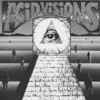 3. Acid Visions – Regional garage and psych compilations are very common. This one focuses on the Lone Star State, which produced a surprisingly diverse and consistently high quality array of sounds in the ’60s. The third and final volume focuses on female artists, a very underrepresented demographic in this male-dominated realm.
3. Acid Visions – Regional garage and psych compilations are very common. This one focuses on the Lone Star State, which produced a surprisingly diverse and consistently high quality array of sounds in the ’60s. The third and final volume focuses on female artists, a very underrepresented demographic in this male-dominated realm.
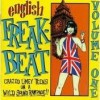 4. English Freakbeat – Since suburban two-car garages are not as common in England, perhaps it was inevitable that a moniker for similar music from the British Isles would be invented, and “Freakbeat” seems just as apt as any. Though the bands on these five LPs share many commonalities with their American garage brethren, a rawer and more purist blues sensibility often dominates.
4. English Freakbeat – Since suburban two-car garages are not as common in England, perhaps it was inevitable that a moniker for similar music from the British Isles would be invented, and “Freakbeat” seems just as apt as any. Though the bands on these five LPs share many commonalities with their American garage brethren, a rawer and more purist blues sensibility often dominates.
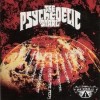 5. Rubble – While this Anglocentric series covers the Freakbeat sound like the series mentioned above, its emphasis is on the more cerebral and whimsical Psych-Pop of the late ’60s British and European scenes. Though spotty at times, many installments in this twenty volume series have numerous great tracks.
5. Rubble – While this Anglocentric series covers the Freakbeat sound like the series mentioned above, its emphasis is on the more cerebral and whimsical Psych-Pop of the late ’60s British and European scenes. Though spotty at times, many installments in this twenty volume series have numerous great tracks.
Further listening: One would think that by this point everything worthwhile has been unearthed, but the excavation continues. As unknown sides from the US and British scenes of the 60’s become scarcer, collectors are looking to more unexplored caches. Private pressings, underground Prog Rock, and Global Garage Rock have been the subject of many comps as of late. Cambodian Rocks delves into a thriving Asian scene that was tragically quashed when the Khmer Rouge took power. Love, Peace, and Poetry, a series still in progress, spans the globe to bring listeners impossibly rare pysch from the ’60s and ’70s. —Richard P
Are we forgetting your favorite series? Share your comments here:
Frank Zappa “Hot Rats” (1969)
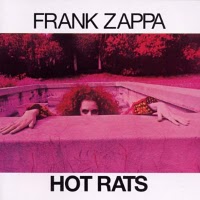 If there’s one thing I’m a sucker for, it’s psychedelic wah-wah guitar; Eddie Hazel’s Game, Dame & Guitar Thangs, Randy California’s Kapt. Kopter, John McLaughlin’s Devotion. And Frank Zappa’s second solo effort, 1969’s Hot Rats, proudly belongs among this stellar mind-blowing company. Somewhat of a break from the high-concept Mothers Of Invention, it’s divided between long guitar jams, most notably “Willie The Pimp,” which re-introduced Captain Beefheart to the world in all his eccentric splendor, and fusionoid instrumentals featuring multi-reedist Ian Underwood in multiple overdubs. Interestingly, Underwood’s flat intonation here takes intriguing lyrical compositions such as “Little Umbellas” and “It Must be A Camel” out of jazz wannabe Weather Report territory into a more formal “classical” direction, always the underlying goal with Zappa anyway. But, in the end, Rats is a showcase for Frank to wail and he ain’t fooling around! –Singersaints
If there’s one thing I’m a sucker for, it’s psychedelic wah-wah guitar; Eddie Hazel’s Game, Dame & Guitar Thangs, Randy California’s Kapt. Kopter, John McLaughlin’s Devotion. And Frank Zappa’s second solo effort, 1969’s Hot Rats, proudly belongs among this stellar mind-blowing company. Somewhat of a break from the high-concept Mothers Of Invention, it’s divided between long guitar jams, most notably “Willie The Pimp,” which re-introduced Captain Beefheart to the world in all his eccentric splendor, and fusionoid instrumentals featuring multi-reedist Ian Underwood in multiple overdubs. Interestingly, Underwood’s flat intonation here takes intriguing lyrical compositions such as “Little Umbellas” and “It Must be A Camel” out of jazz wannabe Weather Report territory into a more formal “classical” direction, always the underlying goal with Zappa anyway. But, in the end, Rats is a showcase for Frank to wail and he ain’t fooling around! –Singersaints
Felt “The Strange Idols Pattern and Other Short Stories” (1984)
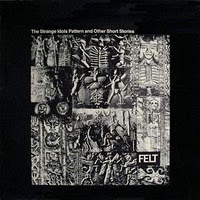 “The Strange Idols Pattern…” is the masterpiece of early indiepop, although is often less considered than Felt’s fifth album, the organ driven “Forever Breathes The Lonely Word”. Here Maurice Deebank provides the best guitar playing I’ve ever heard, a constant whirl of sweet jangly picking (on a 12 string guitar I think) and sometimes classical/Spanish melodies; Lawrence encapsulates such imaginative and brilliant solo playing in wonderful three-chord songs, sung with a monotonous and subtle tone that never sounds cheesy or pathetic like Morrissey’s howling. I understand that such vocals can be considered boring, but I think they’re the best accompaniment for the stream of background notes that – at least for me – has to be on the frontline, while the vocals are secondary. Absolutely great album, my favourite song here is “Crystal Ball”, with the best guitar work ever made by Deebank, and a constant sense of tragedy that remains subtle and never explodes, not even in the final short solo. –Gneo
“The Strange Idols Pattern…” is the masterpiece of early indiepop, although is often less considered than Felt’s fifth album, the organ driven “Forever Breathes The Lonely Word”. Here Maurice Deebank provides the best guitar playing I’ve ever heard, a constant whirl of sweet jangly picking (on a 12 string guitar I think) and sometimes classical/Spanish melodies; Lawrence encapsulates such imaginative and brilliant solo playing in wonderful three-chord songs, sung with a monotonous and subtle tone that never sounds cheesy or pathetic like Morrissey’s howling. I understand that such vocals can be considered boring, but I think they’re the best accompaniment for the stream of background notes that – at least for me – has to be on the frontline, while the vocals are secondary. Absolutely great album, my favourite song here is “Crystal Ball”, with the best guitar work ever made by Deebank, and a constant sense of tragedy that remains subtle and never explodes, not even in the final short solo. –Gneo
Camel “The Snow Goose” (1975)
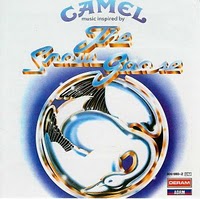 The Snow Goose is an essential experience, evocative and emotional, ambitious in it’s concept and execution, but accessible as well. The band manage to sustain an entirely instrumental album by filling it with brief, memorable pieces, carried by their always measured performances. While most of the album is devoted to the familiar Camel sound, they are joined in places by a small woodwinds group, expanding the scope of the music. Although you’ll want to leave the needle in place once you drop it, a few especially awesome moments are worth mentioning in particular, such as the multi-dimensional “Rhayader Goes To Town”, “The Snow Goose” which features some tender, spine-tingling guitar phrases, the duo of “Preparation”, with it’s foreboding sequencer pattern, and it’s haunting, slow-boiling partner in “Dunkirk”. But this is a complete, constantly unfolding album that should be heard with the lights down low, brew of choice in hand, the world of The Goose swooping into your listening room and filling the next 40 minutes with it’s sublime sounds. –Ben
The Snow Goose is an essential experience, evocative and emotional, ambitious in it’s concept and execution, but accessible as well. The band manage to sustain an entirely instrumental album by filling it with brief, memorable pieces, carried by their always measured performances. While most of the album is devoted to the familiar Camel sound, they are joined in places by a small woodwinds group, expanding the scope of the music. Although you’ll want to leave the needle in place once you drop it, a few especially awesome moments are worth mentioning in particular, such as the multi-dimensional “Rhayader Goes To Town”, “The Snow Goose” which features some tender, spine-tingling guitar phrases, the duo of “Preparation”, with it’s foreboding sequencer pattern, and it’s haunting, slow-boiling partner in “Dunkirk”. But this is a complete, constantly unfolding album that should be heard with the lights down low, brew of choice in hand, the world of The Goose swooping into your listening room and filling the next 40 minutes with it’s sublime sounds. –Ben
Leonard Cohen “Songs of Love and Hate” (1971)
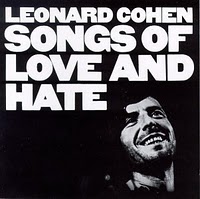 Never the most chipper of performers, Cohen seems to have stopped taking his happy pills here, but the album is all the better for it as far as I’m concerned. Songs about religion? Check. Anguish? Check. Love? Check. No sex though..must be his impotent period. But anyway, it’s just fabulous from start to finish, and contains some of his best lyrics, especially “Avalanche”, “Famous Blue Raincoat”, and “Diamonds In The Mine”. The latter track finds him nearly losing it like some angry lounge singer, his background vocalists barely keeping him in check. There was never any doubt Leonard Cohen was a poet, but both his written word and music shine perfectly in unison here. Speaking of poetry, if you’re a woman in college right now and some smooth character is shooting you provocative looks from the poetry section in the library, run like hell. I know he’s probably holding a copy of Cohen’s “Beautiful Losers” and has a wine collection, but he’s not worth it. Trust me. –Neal
Never the most chipper of performers, Cohen seems to have stopped taking his happy pills here, but the album is all the better for it as far as I’m concerned. Songs about religion? Check. Anguish? Check. Love? Check. No sex though..must be his impotent period. But anyway, it’s just fabulous from start to finish, and contains some of his best lyrics, especially “Avalanche”, “Famous Blue Raincoat”, and “Diamonds In The Mine”. The latter track finds him nearly losing it like some angry lounge singer, his background vocalists barely keeping him in check. There was never any doubt Leonard Cohen was a poet, but both his written word and music shine perfectly in unison here. Speaking of poetry, if you’re a woman in college right now and some smooth character is shooting you provocative looks from the poetry section in the library, run like hell. I know he’s probably holding a copy of Cohen’s “Beautiful Losers” and has a wine collection, but he’s not worth it. Trust me. –Neal


